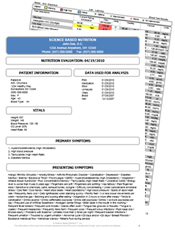During the winter season, we have all heard the stories of a neighbor, family member or friend that goes out to shovel snow and BOOM, heart attack! What really just happened? Read on, to see where leading experts are now evolving their thoughts to understand how heart attacks happen and what to do before they strike YOU. Also, what you can do to fend off this issue before it takes root in your body and wreaks havoc on one of your most vital organs.
All along the conventional “wisdom” has been to think that cholesterol and other forms of arterial plaques are the real reason behind both heart attack and stroke. According to Dr. Thomas Cowan, MD this theory has been disproven time after time but has yet to become fully accepted throughout expert communities worldwide.
Understanding how heart attacks truly happen has been a crucial and critical pursuit over the last five decades. The steadfast belief in the coronary artery theory has cost our nation billions of dollars in unnecessary surgical costs, billions in medications that cause as much harm as allow for any positive benefits, and, most seriously, has led many to adopt a low-fat diet, which only worsens the problem.1
One common tenet that Dr. Cowan comes back to over and over again is how heart disease is a true manifestation of the stresses of modern civilized life on the core of the human being. If we are capable of overcoming this epidemic of heart disease, which has continued to be the leading cause of death in the USA, a new medical paradigm is needed.2 A new economic system and even a new ecological consciousness are sorely needed and in fact an entirely new way of life is a requirement. The coronary theory misses all of this, just as it misinterprets the actual pathological events.1
The conventional theory of heart attack considers that plaques, thought to be composed of cholesterol, build up with the arterial wall and eventually cut off blood supply to certain areas of the heart. The resulting oxygen deficiency in the area causes angina/pain and then progresses further to ischemia or pathological cellular death.
The “easiest” solution was to unblock the stenosis or blockage by either angioplasty or implantation of a stent. If neither of the first two options where available than coronary artery bypass was the third and final available option.
Dr. Cowan came across two major issues with this approach and theory. First he listened to a presenter at the cardiology conference of northern California detail his residency experiment findings. In Alabama, among African-American males, angiograms where conducted on all men presenting with chest pain. For those men that had a single artery blocked, no interventions were done. Researchers did however, note which portion of the heart would likely suffer a future heart attack if one where to occur. The researchers predicted it would be in the part of the heart supplied by that particular coronary artery. Time marched on and eventually many of these men returned after having heart attacks. Much to the surprise of the experts less than 10% had a heart attack in the area of the heart, supplied specifically by the originally blocked artery. The take home note here is that had the researchers insisted that doctors perform the usual angioplasty, stent, or bypass on that blocked artery, the patient would have received NO BENEFIT AT ALL.
The second mind-changing event, for Dr. Cowan, was the 2003 publication of a large study conducted by the Mayo Clinic on the efficacy of bypass surgeries, stents and angioplasty.3 Conclusions from this research revealed that bypass surgery does relieve symptoms of heart attack/chest pain; that bypass surgery does not prevent further heart attacks; and that only high risk patients benefit from bypass surgery with regard to a better chance of survival. In other words, the gold standard for treating arterial blockages provides at best only minimal benefits.1
In truth, the view that the four coronary arteries supply all of blood to the heart is completely wrong. Starting shortly after humans are born, the normal heart develops an extensive network of small blood vessels called collateral vessels that eventually compensate for the interruption of flow in any one, or more, of the major vessels.1
Currently, most of the bypasses, stents and angioplasties are performed on minimally symptomatic patients who show a greater than 90% blockage in one or more coronary artery. These arteries are almost always fully collateralized; it is not the surgery that restores blood flow, because the body has already done its own bypass.
Final note to ponder is this…if tests showed that you had a major coronary artery with 90% blockage thus leaving you with only 10% flow “squeezing through the exit lane,” how could you still possibly be alive if you did not already have collateral blood vessels? And are we really to believe that the decisive thing that will cause the eventual heart attack is when the stenosis (blockage) goes from 93% to 98%? 1
This is an insignificant difference, and the thoughts/theories that suppose this to be a cause of heart attack does not make much SENSE.
What can you do? Well as we have been recommending for many years annual or semi-annual blood tests can catch problems before they become full blown, there are a cornucopia of tests that can adequately assess heart stresses, heart muscle failure and even signs of stress on non-cardiac organs. Contact our office for further details because it is never too early in life to work toward preventing heart attacks.
References:
1. Cowan Thomas S. What’s the Real Cause of Heart Attacks? Dec. 17, 2014.
2. Centers for Disease Control and Prevention. Health United States, 2015; Table 19, Leading Causes of Death in 2014.
3. Rihal CS, et al: “Indications for coronary artery bypass surgery and percutaneous coronary intervention in clinic stable angina.” Circulation, 2003.


